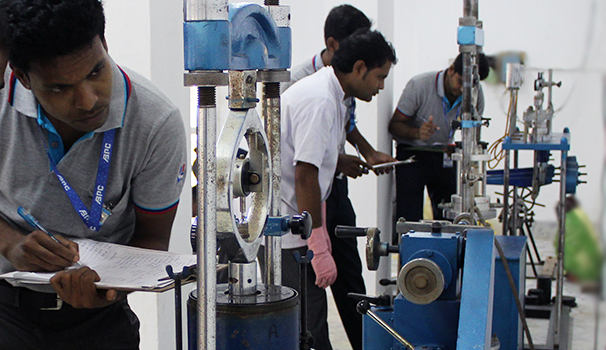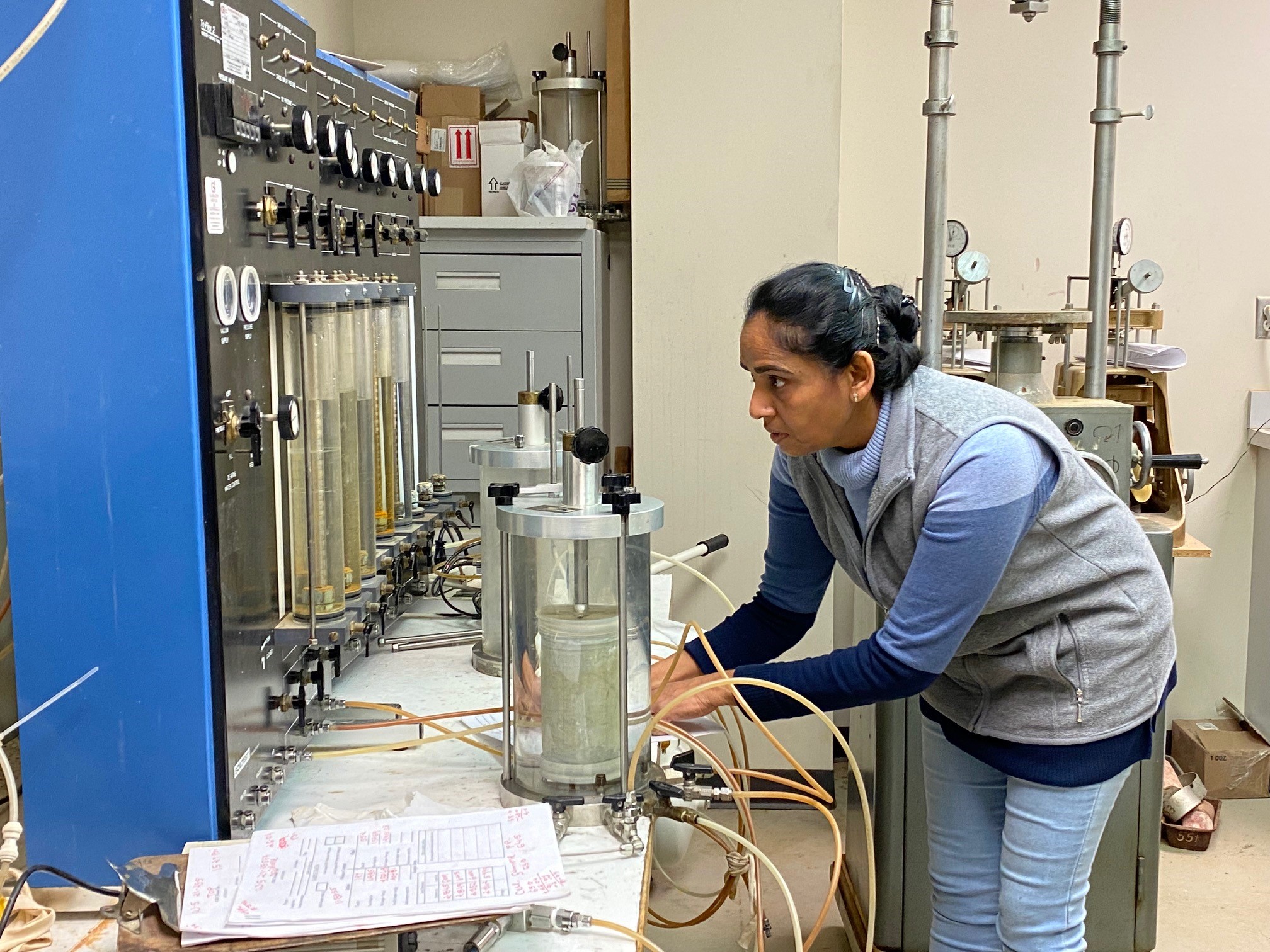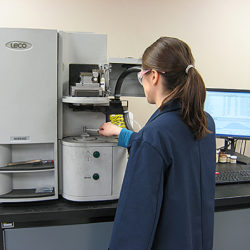Comprehensive Material Testing Lab: Your Companion for Accurate Quality Assurance
Wiki Article
Advancements in Material Screening for Unprecedented Efficiency
This brings us to the fascinating world of developments in material testing, where sophisticated methodologies and innovative techniques are transforming the method we comprehend and optimize product performance. Let us get started on this trip of expedition, as we discover the exceptional improvements in material screening and their prospective to shape the future of various industries.Non-Destructive Evaluating Strategies
Non-destructive testing techniques are necessary for assessing the honesty and reliability of products without triggering any kind of damage. These techniques play a vital function in various industries, including aerospace, automotive, building and construction, and manufacturing. By making use of non-destructive screening approaches, engineers can assess the buildings and characteristics of products, making sure that they satisfy the called for standards and specifications.
Another widely made use of strategy is magnetic bit testing (MT), which is primarily used for spotting surface area and near-surface issues in ferromagnetic products. By using an electromagnetic field to the material and afterwards introducing magnetic particles, any kind of defects provide can be quickly identified. MT is specifically effective for finding splits, absence of combination, and various other surface area irregularities.
Advanced Products Characterization Methods
Advanced materials characterization techniques are necessary tools for examining the homes and performance of products in various sectors. These methods entail making use of advanced strategies to evaluate and recognize the microstructure, structure, and actions of products at the molecular and atomic degrees. By using advanced characterization methods, scientists and engineers can acquire important understandings into the architectural integrity, mechanical buildings, thermal stability, and chemical reactivity of products.One extensively utilized method is scanning electron microscopy (SEM), which supplies high-resolution images of a product's surface area. SEM enables the exam of the product's morphology, topography, and elemental structure. One more important technique is X-ray diffraction (XRD), which supplies information concerning the crystal framework and phase composition of materials. XRD is especially helpful for examining the plan of atoms in crystalline materials.
In addition, transmission electron microscopy (TEM) allows researchers to observe the inner structure of materials with atomic resolution. TEM is capable of disclosing information such as grain borders, flaws, and dislocations, giving vital information regarding a material's mechanical residential properties - material testing lab. In addition, spectroscopic techniques like Fourier-transform infrared spectroscopy (FTIR) and Raman spectroscopy can be made use of to evaluate the chemical composition, molecular structure, and vibrational settings of products
High-Temperature and Extreme Atmosphere Screening
In order to review the efficiency of products in high-temperature and extreme atmospheres, strenuous testing methods are essential. These testing methods are designed to mimic the problems that materials might come across in real-life applications, such as aerospace, automotive, and power industries. High-temperature and extreme atmosphere testing intends to examine the habits of products under extreme heat, pressure, and various other difficult problems.One frequently made use of technique for high-temperature screening is thermal analysis. This approach involves subjecting the product to differing temperatures while determining its thermal buildings, such as thermal growth, heat ability, and thermal conductivity. By assessing these residential or commercial properties, scientists can establish just how the material will certainly act under different temperature conditions, allowing them to choose the most suitable products for specific applications.
Another crucial element of high-temperature and extreme setting testing is mechanical screening. This entails subjecting the product to mechanical anxiety at elevated temperature levels, mimicing the problems it might experience in real-world applications. Mechanical screening helps examine the material's resistance, ductility, and strength to contortion and failing under severe and high-temperature problems.
In addition, ecological testing is critical to analyze the product's performance in extreme problems, such as destructive environments or exposure to severe weather problems. This screening involves subjecting the material to different environmental elements, such as moisture, salt see post spray, and UV radiation, to review its resilience and resistance to corrosion and deterioration.

Simulation and Modeling for Product Performance
Simulation and modeling play an important function in understanding and forecasting the efficiency of products in different applications. With advancements in computational capabilities, researchers and engineers can now imitate and model the actions of products under various conditions, supplying valuable insights into their performance and helping in the development of brand-new materials with boosted properties.With simulation and modeling, researchers can research the macroscopic and tiny behavior of products, including their mechanical, thermal, and electrical residential properties. This enables them to predict exactly how materials will act under various loads, temperatures, and ecological conditions, without the need for time-consuming and expensive experimental screening.
Simulation and modeling methods also allow researchers to optimize product designs and identify potential weaknesses or failing factors. By examining the material's response to different pressures and stimulations, engineers can make enlightened decisions regarding material choice and style modifications to boost efficiency and toughness.
Moreover, simulation and modeling can assist in the advancement web link of materials for details applications. In the aerospace industry, scientists can simulate the actions of materials under severe temperature levels and stress to establish lightweight yet solid products for airplane structures. In the medical field, simulation methods can be utilized to research the interactions between products and organic cells, leading to the advancement of biocompatible materials for implants or medication distribution systems
Integration of Expert System in Product Screening
The incorporation of Artificial Knowledge (AI) into material testing has revolutionized the area, making it possible for scientists to attain unprecedented accuracy and performance in assessing material efficiency. AI algorithms can refine and evaluate large quantities of data, determining patterns and connections that may not be promptly evident to human scientists. This enables for more specific and extensive testing, resulting in a much deeper understanding of product habits.One application of AI in product screening remains in the growth of anticipating versions. By training AI algorithms on huge datasets of material properties and performance, researchers can create designs that can accurately forecast the actions of new products under numerous problems. This can substantially quicken the product advancement process, as it permits researchers to screen and prioritize products with wanted residential properties.
In addition to predictive modeling, AI can likewise be utilized to maximize screening treatments. By evaluating historic screening information, AI algorithms can determine one of the most efficient and informative examinations to carry out, decreasing the moment and resources required find here for product examination.
Moreover, AI can assist in the identification of anomalies or problems in materials. By comparing test outcomes against expected end results, AI formulas can find inconsistencies and alert scientists to possible issues. This can help improve quality assurance procedures and guarantee making use of materials that meet the called for specifications.
Conclusion

By analyzing these buildings, scientists can determine how the product will certainly act under different temperature level conditions, enabling them to pick the most ideal materials for details applications.
The consolidation of Artificial Intelligence (AI) into product testing has reinvented the field, allowing scientists to attain extraordinary accuracy and efficiency in assessing product efficiency.In final thought, developments in product testing methods, characterization methods, extreme and high-temperature setting testing, and the assimilation of fabricated intelligence have actually greatly contributed to the development of unmatched efficiency in products. These improvements have permitted for the identification of material residential or commercial properties and habits, enabling the layout and optimization of products for various applications. material testing lab. With additional research study and technological improvements, material screening will proceed to play a vital role in pressing the boundaries of product efficiency
Report this wiki page